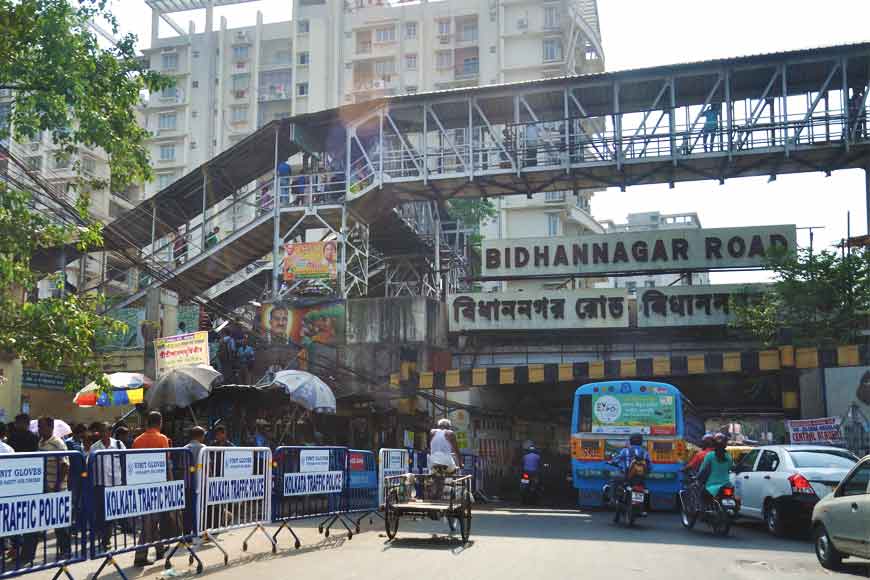What is topsy-turvy about Ultadanga?

Is it upturned? Is it twisted or gone topsy turvy? Never mind the Bengali name of the neighbourhood, Ultadanga is flat straight land, but might have got its name from an upturned boat or dingi, that were found in abundance here once upon a time. Ultadanga became a part of the developing metropolis of Calcutta in 1717, when the British East India Company rented 38 villages close to the city from Mughal Emperor Farrukhsiyar.
In 1758, the Company went on to purchase 55 villages, including the 38 that it had previously rented, from Nawab Mir Jafar, and incorporated them all as the outer fringes of the developing city. These villages formed what was called ‘Dihi Panchannagram,’ meaning 55 villages that lay outside the Maratha Ditch. The villages that formed Dihi Panchannagram fell outside the boundaries of the Maratha Ditch and only became a part of Calcutta when the ditch was partially filled in 1799 and then entirely in 1893. Of these 55 villages, one was that of Ultadingi, an early form of the name ‘Ultadanga’.
The Bidhannagar railway station that skirts the neighbourhood of Ultadanga started operations in 1862 as part of the Sealdah-Kustia (now in Bangladesh) line of the Eastern Bengal Railways.
According to historian P Thankappan Nair, the name indicates the village’s location on the opposite bank of the ditch, where boats plying on the river were constructed and repaired. Remnants of this river can be found even today as a long canal that runs on the periphery of the neighbourhood, till it slowly snakes its way to the Bay of Bengal. Over time, as the surrounding land was reclaimed and settled, the river receded, leaving behind a sliver of its former self in the form of what is now the Kestopur Canal.
In the book ‘The Early Annal of the British in Bengal’ by C R Wilson, first published in 1911, the neighbourhood has been mentioned by its present name, indicating that sometime over the centuries, the name ‘Ultadingi’ underwent corruption and acquired its present form while the British were still in India. Nair writes: “According to the Calcutta Municipal Gazette of September 1936, Acharya Prafulla Chandra Ray, Satyananda Siddhartharatna and others petitioned the Calcutta Municipal Corporation to rename Ultadanga Main Road after Dinanath Das, a Bengali gentleman involved in charity, but the Corporation did not accede to their request. In August 1944, some Ultadanga residents reiterated this request to the Corporation on grounds that Das, as a proprietor of the local market Nootan Bazaar, was a person of prominence and because Das’s son, Debendranath, was a member of the Bengal Legislative Council. The request was again denied.”
In 1758, the Company went on to purchase 55 villages, including the 38 that it had previously rented, from Nawab Mir Jafar, and incorporated them all as the outer fringes of the developing city. These villages formed what was called ‘Dihi Panchannagram,’ meaning 55 villages that lay outside the Maratha Ditch.
The Bidhannagar railway station that skirts the neighbourhood of Ultadanga started operations in 1862 as part of the Sealdah-Kustia (now in Bangladesh) line of the Eastern Bengal Railways. It is not clear when the railway station was named ‘Bidhannagar’, but the stop gets its name from Bidhan Chandra Roy, the second Chief Minister of West Bengal, who was a doctor by profession and a philanthropist.
The Kestopur Canal, once an important water source, was for years treated as a garbage dump by locals. Today it has lost its glory of being the boat repairing hub of old Calcutta.










